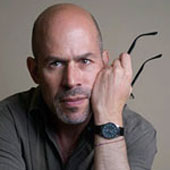Globalization and Malinchismo
Why are some New York residents choosing to make their homes in Mexico City?
October 17, 2008
Since the early 1990s, Mexico City has gradually acquired a more international flavor.
It isn’t London or New York, but in certain sections of town it is common to hear foreign languages and accents — particularly from South America, Europe and the United States.
The Chinese are growing in numbers, there is a small but visible Korean population — and one can even see a smattering of Haitians and Africans on the street.
Their presence is making it a more dynamic city, with greater cultural offerings and international products (albeit only available to the fraction of residents who can afford them).
In the trendy neighborhoods, restaurants that offer foreign cuisines far outnumber Mexican eating places. Live music and dance clubs boast performers and deejays from all over the world.
On the cusp of her fortieth birthday — soon after giving birth to a child — caterer Sonia El-Nawal broke up with the baby’s father.
She’d lived in New York for eleven years, and her stints as a pastry chef in trendy restaurants such as Jean Georges, Jo Jo and Nobu had earned her favorable notices in the New York Times, Time Out and New York magazine.
Still, the economics of New York are harrowing to many residents who, despite professional success, barely make ends meet.
A zaftig redhead with ice-blue eyes, Sonia decided that what she really wanted was to leave town. Given her background, finding a new abode was less daunting than it might have been for others.
Born in Tripoli, she was raised in Beirut until she was twelve, when her mother moved the family to San Francisco. Apart from New York, she has also worked in restaurants and catering in Paris, Brussels and Miami.
A call from food-and-beverage entrepreneur Jonathan Morr, with whom she had worked both in Miami and New York, came as a relief.
He was designing the “concepts” for two restaurants, a bar, and a nightclub at what would become the Hotel Condesa DF, the first hostelry in Mexico City’s trendiest neighborhood.
She was offered a job as a pastry chef, at six thousand dollars a month, with a rent-free two-bedroom furnished apartment in Polanco and benefits that included medical insurance for herself and her son.
Rafael Micha, one of the owners of the hotel, doesn’t consider himself a malinchista for hiring Sonia rather than a Mexican.
He explains that the first hotel he opened, the Habita in Polanco, had drawn enormous attention in the international press. Because of the Habita’s success, the stakes for the second hotel were even higher.
The employment of a foreign chef was a virtual guarantee of greater press attention than would have been garnered by a Mexican (perhaps evidence of malinchismo in the press’s food columns).
Due to delays in the hotel’s opening, Sonia and the executive chef (also recruited by Morr out of New York) spent six months at full salary, traveling to different parts of the country researching food and testing recipes.
Her Mexico City — between Polanco and Condesa, the city’s two most cosmopolitan areas — strikes her as “a cross between Cairo, Europe and Beirut.”
The architecture reminds her of the Old World, and the manners of the neighborhood merchants bring back memories of the Middle East.
After a little more than a year she was promoted to executive chef at the hotel, but left that job two years later to open her own gourmet shop.
Much of Sonia’s delight in Mexico City has to do with economics. For instance, in New York, she could never afford an apartment the size of the one she lives in in Mexico City, in as upscale a neighborhood.
Her son’s private-school tuition costs her four hundred dollars a month, and the nanny who helps her daily only charges three hundred dollars monthly.
She has visited the United States several times during the four years she has been in Mexico, sometimes mulling over the prospect of moving back.
Each time she returns she seems more resolute to stay in Mexico.
“New York is transient, and it’s great for people in their twenties. But I got older. I no longer have the same tolerance or patience for certain things, like the extreme cold.”
“I don’t want to schlep in the subway during a snowstorm. Also, I’m a single parent now, and New York is hostile to children.”
“The lady who cares for Amani treats him like he was her grandson. She takes him to play with her nieces or they come here to play, and he calls her abuela. They feel deeply about families here, and that’s important to me now.”
Editor’s Note: This article is an excerpt from the book “First Stop in the New World” by David Lida. Published by Riverhead Hardcover, 2008. Reprinted with permission of the publisher.
Takeaways
The architecture reminds her of the Old World, and the manners of the neighborhood merchants bring back memories of the Middle East.
An international presence is making Mexico City a more dynamic city, with greater cultural offerings and international products.
Still, the economics of New York are harrowing to many residents who, despite professional success, barely make ends meet.
"They feel deeply about families here, and that's important to me now."
Mexico City — between Polanco and Condesa, the city's two most cosmopolitan areas — strikes her as "a cross between Cairo, Europe and Beirut."
Read previous
Mexico City’s Rodeo Drive
October 16, 2008
